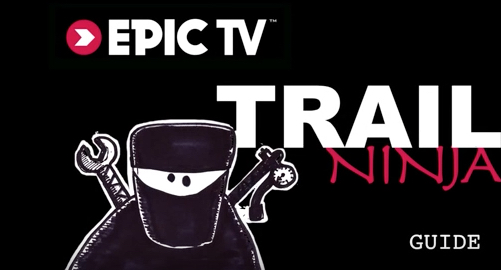EVERYTHING!
This opinion piece in the Missoula Independent, Power to the pedal, amply expresses the world view of the mountain biker, aided, abetted and encouraged by the mountain biking industry (MBI), which, just incidentally, makes millions of dollars of profits from mountain bike gear heads everywhere.
I remember when I saw, and purchased, my first “mountain bike.” 1984. Auspicious, eh?
Yes, it was a heavy framed, derailleur, fat-tired bicycle. I think it cost US$250. Sort of knobby tired. Nothing like the very specialized mountain bikes preferred by the gear clad, dedicated mountain bikers of today. I rode it until the derailleur wore down and fell off from abrasion from the glacier silt burdened soils and rain runoff in Southeast Alaska.
We see them everywhere nowadays, pedaling merrily down paved bike paths and lanes in Santa Cruz, their riders festooned with gaily colored “hydration systems” (aka tiny backpacks filled with water with a tube running over the bicyclists shoulder, lest one should have to stop to take a drink while plying the wilds of the San Lorenzo River Levee), “crash” helmets, biking shorts and shirts, clip-on biking shoes (that require bicyclists to wobble precariously while trying to stand in place at stop lights, and/or blow through all traffic signals and stop signs). Expensive gear. Expensive bikes. Commerce on wheels.
Unwilling to limit the use of their metal steeds as practical transportation to and from work, shopping or frequent trips to bike shops, mountain bikers prefer to load their bikes on their motorized vehicles, transport them to the portal of a local natural area and pound them through forests and over grasslands in a frenzy of mechanical activity.
Here’s an example of Santa Cruz mountain biking excess:
Says it all, doesn’t it.
And how about all that beer? Makes for a memorable bicycling experience.
Whenever we attend a planning session for open spaces, natural areas or just about any remaining undeveloped land round these parts, we’re met with gear clad mountain bikers and their corporate sponsors, loudly complaining that there’s no place for mountain biking in the area.
Oh, except this list of mountain bike playgrounds from the local mountain bike website:
http://www.mbosc.org/:
Mountain Bike Trails
Big Basin Redwoods State Park
Castle Rock State Park
DeLaveaga City Park
Henry Cowell State Park
Forest of the Nicene Marks State Park
Pogonip
Sequel Demonstration State Forest
UCSC
Wilder Ranch State Park
Pump Tracks
Chanticleer County Park
West Side Santa Cruz
Scotts Valley
Pump tracks in planning
Scotts Valley High School
Capitola (McGregor Drive)
Velocity Pump Track (Felton)
Portable pump track (San Lorenzo River Park)
Not quite everything, yet, but sufficient to ruin a pleasurable hike in the woods most anywhere in the area.





